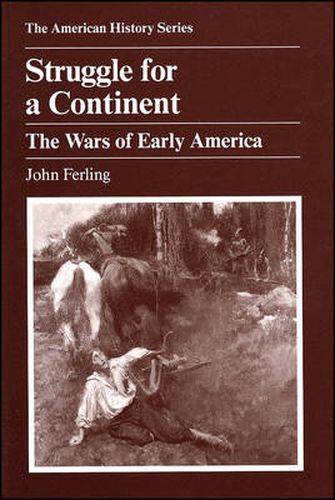Readings Newsletter
Become a Readings Member to make your shopping experience even easier.
Sign in or sign up for free!
You’re not far away from qualifying for FREE standard shipping within Australia
You’ve qualified for FREE standard shipping within Australia
The cart is loading…






America’s origins are inextricably linked to warfare. In Struggle for a Continent, John Ferling tells the complex story of conquest and survival not only in the encounters between European settlers and the native peoples of North America, but also the North American wars among the great powers of Europe to win hegemony in America. While Professor Ferling’s unflinching narrative recounts the heroism, anguish, terror, treachery, and barbarism of early American warfare, it also carefully addresses questions such as: the difference between the nature of warfare in America and that in Europe; who in the colonies soldiered in these wars; the changing role of the militia; and how warfare affected civilians. The author assesses the capabilities of America’s amateur soldiers and Europe’s professionals and examines the nature of Indian warfare. Finally Professor Ferling links the warfare of the colonial era to the American Revolution itself.
$9.00 standard shipping within Australia
FREE standard shipping within Australia for orders over $100.00
Express & International shipping calculated at checkout
America’s origins are inextricably linked to warfare. In Struggle for a Continent, John Ferling tells the complex story of conquest and survival not only in the encounters between European settlers and the native peoples of North America, but also the North American wars among the great powers of Europe to win hegemony in America. While Professor Ferling’s unflinching narrative recounts the heroism, anguish, terror, treachery, and barbarism of early American warfare, it also carefully addresses questions such as: the difference between the nature of warfare in America and that in Europe; who in the colonies soldiered in these wars; the changing role of the militia; and how warfare affected civilians. The author assesses the capabilities of America’s amateur soldiers and Europe’s professionals and examines the nature of Indian warfare. Finally Professor Ferling links the warfare of the colonial era to the American Revolution itself.